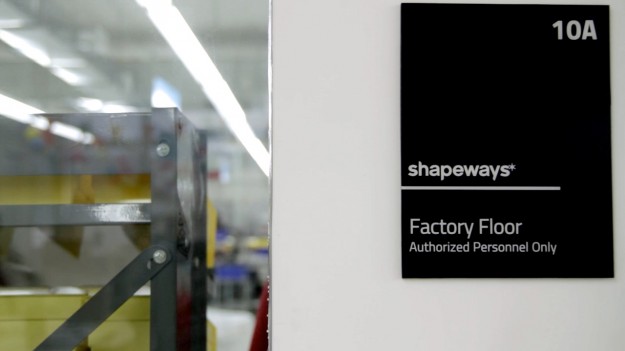
Hello to all. My name is David Gillispie, I’m the Vice President of Manufacturing for Shapeways and I thought I would start by telling you a little about myself. I’ve worked in engineering and manufacturing for over 20-years in both start-ups and medium sized companies running their operations. I consider myself a lifelong learner and a dedicated practitioner of lean manufacturing and continuous improvement. I’m super excited to start a series of discussions on manufacturing with our community. I would like to preface my discussion by first saying how delighted I am to interact with our community. One of my goals will be to keep my topics relevant and accessible. In the future I will cover topics on manufacturing to include lean manufacturing, innovation, processes, and manufacturing strategy. Your feedback and suggestions are welcomed and I’ll try to make these posts informative.
One of our core values at Shapeways is fun. We take pleasure in transforming the skill and imagination of creative individuals into tangible products. I would like to start with a general discussion around manufacturing challenges and strategies we use to improve our processes.
Some of the challenges facing Shapeways and other 3D manufacturers for the consumer market is the lack of benchmark data. While Business to Business 3D printing has been going on for years, the consumer market is less established. There are enough similarities to make decisions on printers, materials, and some processes. The challenge is around the high product mix, post production, and the speed at which products must be delivered on a large scale.
Our community is an exciting and diverse collection of designers and consumers who make and buy really cool products. As a result the products we produce seldom resemble a traditional manufacturing mix. Creating an efficient and steady manufacturing flow or movement of material requires capacity planning that examines product mix, build times, and available post production resources. Of the three, the more challenging aspect is post production. Post production includes break out of the product, sorting, polishing, dyeing, quality check, and distribution. Bottle necks or constraints in the post production process can occur with machines, material, or people. To mitigate the potential impact we constantly review these areas and implement process improvements or add more capacity. We also cross train our team members so they can flex up and down the manufacturing line.
This is an exciting time to manufacture in the 3D printing industry. Shapeways is rewriting the book on manufacturing with the ultra-high mix, print on demand environment where quality, price, and delivery are being redefined. Our community is pushing us to improve and we listen to your feedback by continually improving our processes. If you have any questions about our materials like the white strong and flexible nylon, full colored sand stone or frosted detail; processes like polishing, dyeing, sorting; or our equipment like our printers – please don’t hesitate to ask. I look forward to hearing from you and answering your questions.




Can you extend the dimensions for polishing & dying to include parts up to 180mm – width will stay umder 100mm & depth under 30mm? The new crop of smartphones need cases that exceed 150mm in one dimension. See our shop Custom Power Solar
Good point, we were already looking into extending polishing dimensions.
thanks,
Pete
I’m a new Shapie, starting out with jewelry design. I made my first ring in stainless steel and think it has good potential for being a hot seller. What would you do if you got 5K orders for it? I don’t want to disappoint that many customers with horrendous delivery times.
Hi dear Shapeways team. Why not introducing a silver/gold plating feature for the plastic products? It could boost their value and increase overall sales a lot. I know it is not a very easy process, but I am sure Shapeways could manage this in the long run. What are your thoughts on this matter?
What about how to measure tensile strength in choosing a material to print? I am working on a product which requires the strength to be able to sustain consistent pulling in the 150lb range.